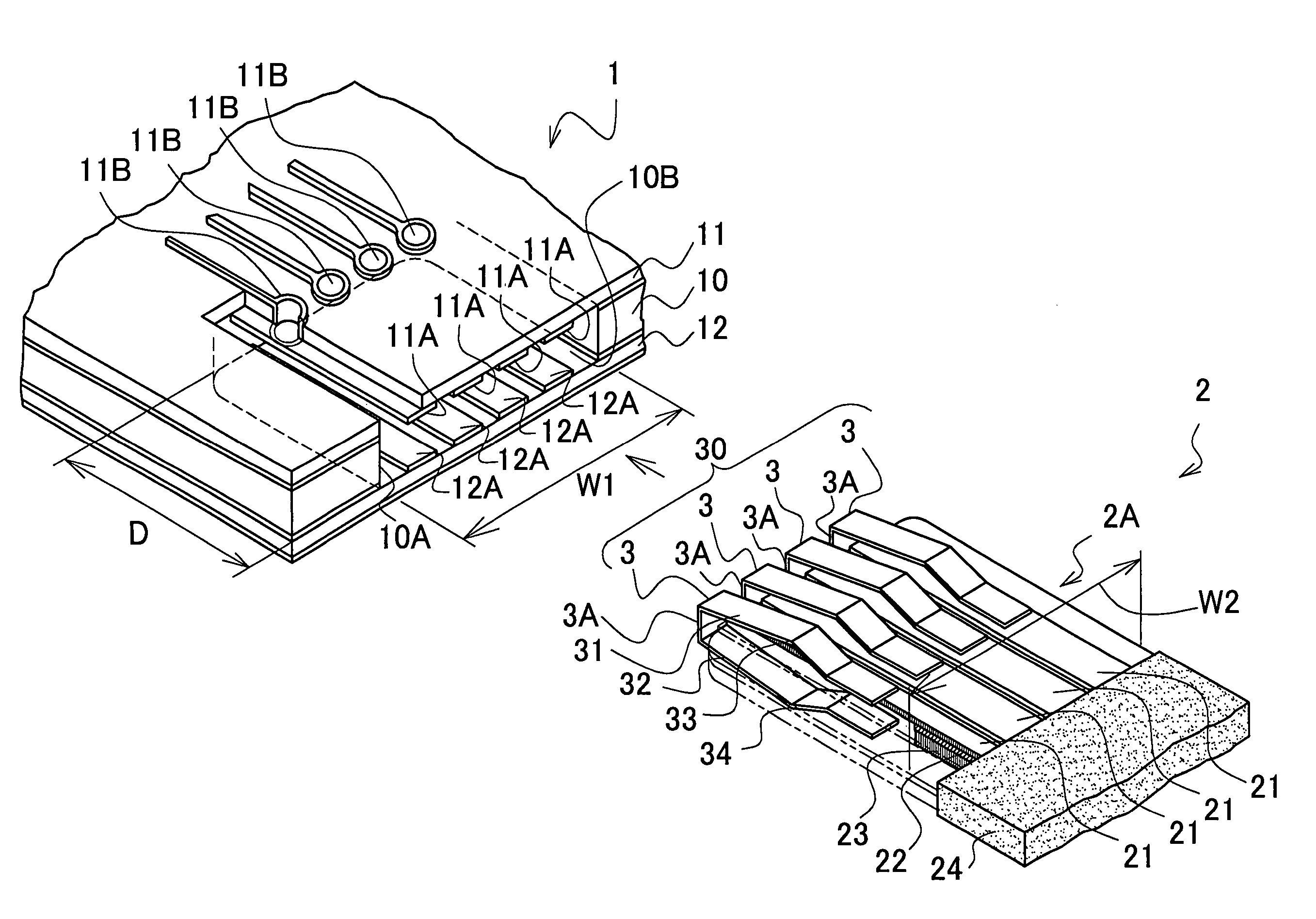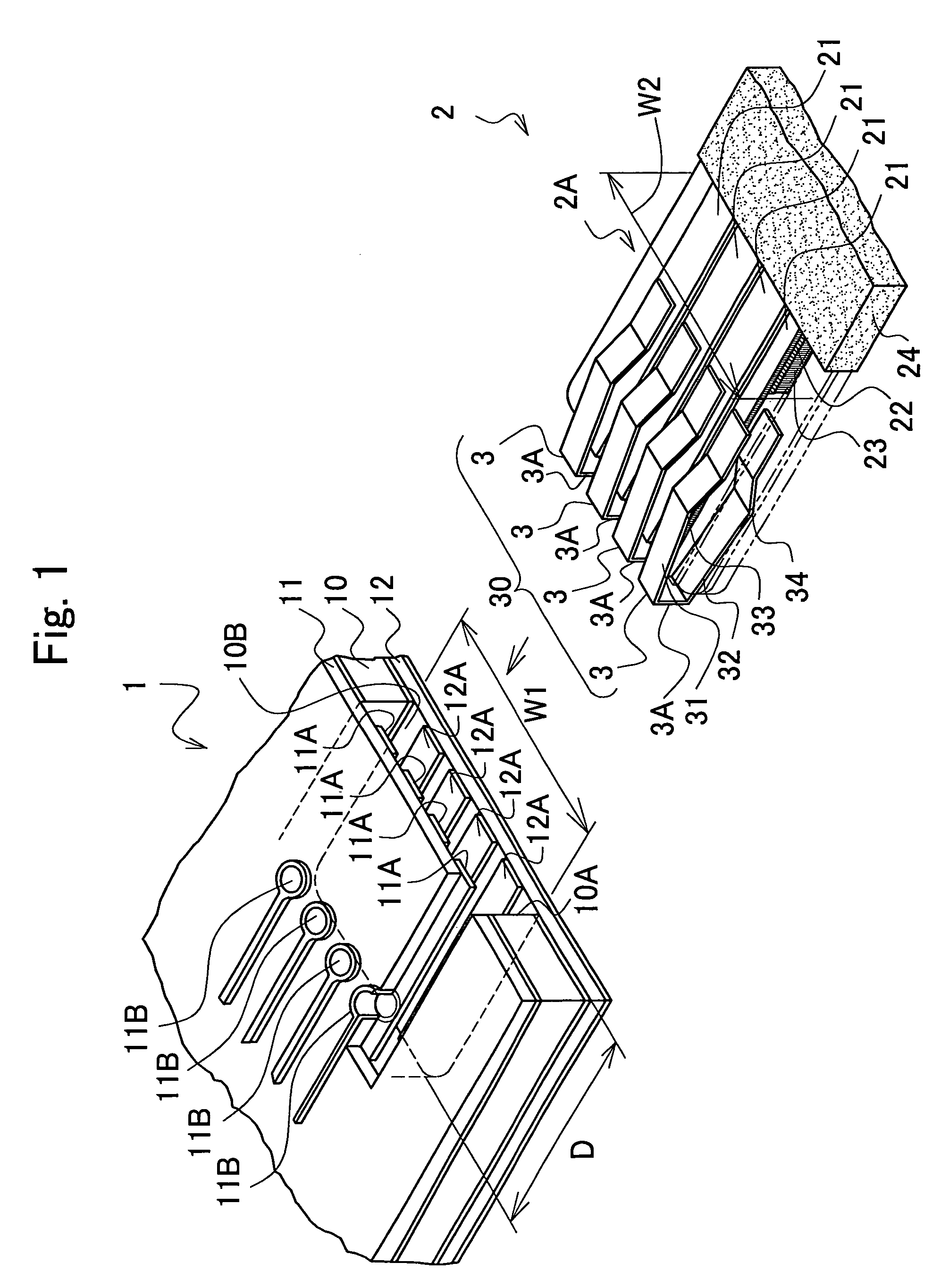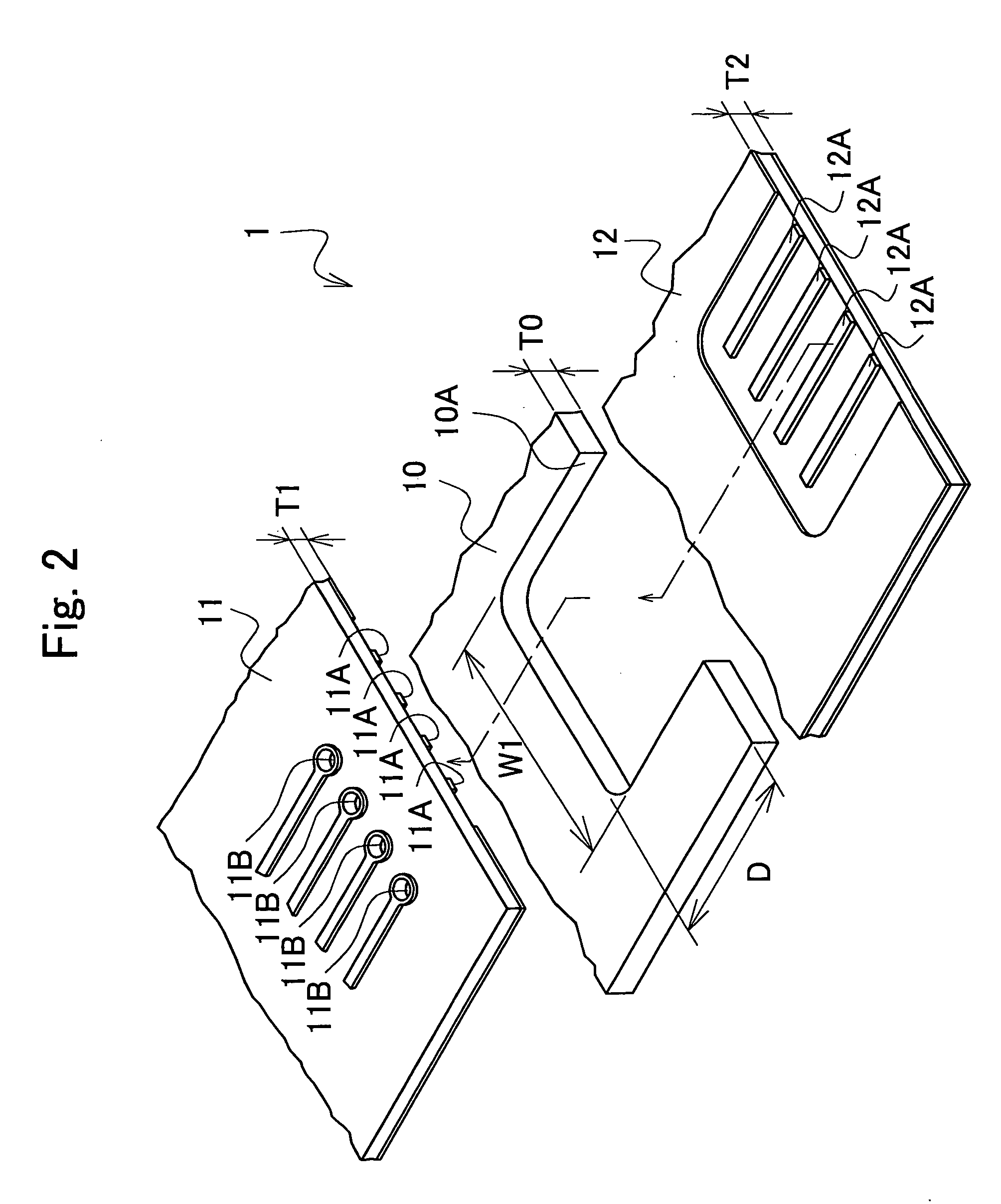Connection structure of printed wiring board
a technology of connecting structure and printed wiring board, which is applied in the direction of coupling contact member, coupling device connection, printed circuit aspect, etc., can solve the problems of difficult mounting of circuit elements with high density, and achieve the same roughness, superior contact performance, and easy wear
- Summary
- Abstract
- Description
- Claims
- Application Information
AI Technical Summary
Benefits of technology
Problems solved by technology
Method used
Image
Examples
first embodiment
[0065]FIG. 1 is a perspective view showing a FPC 2 and a printed wiring board 1 according to a first embodiment of the present invention.
[0066] The FPC 2 includes an elongated substrate 22, a reinforcing plate 23 adhered onto the lower face of the substrate 22, and plural electro-conductive portions 21 which are layered on the upper surface of the substrate 22 and extend in an axial direction of the substrate 22.
[0067] While the FPC 2 is coated with a polyimide film 24, top end portion thereof is exposed, thereby forming an exposed electro-conductive portion 2A having a width W2.
[0068] The substrate 22 is formed of a material having insulating capabilities, e.g., a thin polyimide film.
[0069] The electro-conductive portions 21 are formed of a favorable material having electro conductivity and formability, and are subjected to nickel plating.
[0070] Furthermore, a dual in-line contact member 30 is fixed to the top end portion of the FPC 2. The dual in-line contact member 30 includ...
second embodiment
[0092] With the present embodiment, a dual in-line contact member 30A has a different configuration from that of the first embodiment.
[0093]FIG. 4 is a perspective view of the FPC 2 according to the second embodiment of the present invention.
[0094] The dual in-line contact member 30A includes a first header 39 holding the main bodies 3A of the first contact members 3 in a state in which the first contact members 3 are arrayed. The first header 39 is formed of synthetic resin and is formed by molding, together with the first contact members 3.
[0095] With the present embodiment, the plural first contact members 3 are arrayed with sufficient precision so that the FPC 2 can be connected to the printed wiring board 1 in more reliable surer manner.
[0096] Next, a procedure for inserting the FPC 2 to the printed wiring board 1 will be described with reference to FIG. 5.
[0097] When the top end portion of the FPC 2 is inserted into the insertion opening 10B of the printed wiring board 1,...
third embodiment
[0098] The present embodiment has generally the same configuration as that of the first embodiment, except for a first adapting connector 5 fixed to the top end portion of the FPC 2 instead of the dual in-line contact member 30.
[0099]FIG. 6 is a perspective view of the FPC 2 and the printed wiring board 1 according to the present embodiment.
[0100] In the top end portion of the FPC 2, the first adapting connector 5 which includes plural elastically deformable second contact members 4 and a first housing 5A holding the second contact members 4 is fixed. Each second contact member 4 includes a main body 4A contacting with the top end portion of the FPC 2, and a third arm 41 and a fourth arm 42 extending from the main body 4A along the surface of the first housing 5A with pinching the electro-conductive portion 21 therebetween. The fourth arm 42 is bent at a bending portion 4D to protrude outward from the first housing 5A.
[0101] The first housing 5A holds the third arms 41 of the sec...
PUM
 Login to View More
Login to View More Abstract
Description
Claims
Application Information
 Login to View More
Login to View More - R&D
- Intellectual Property
- Life Sciences
- Materials
- Tech Scout
- Unparalleled Data Quality
- Higher Quality Content
- 60% Fewer Hallucinations
Browse by: Latest US Patents, China's latest patents, Technical Efficacy Thesaurus, Application Domain, Technology Topic, Popular Technical Reports.
© 2025 PatSnap. All rights reserved.Legal|Privacy policy|Modern Slavery Act Transparency Statement|Sitemap|About US| Contact US: help@patsnap.com



